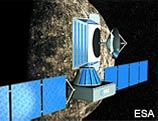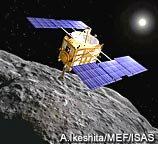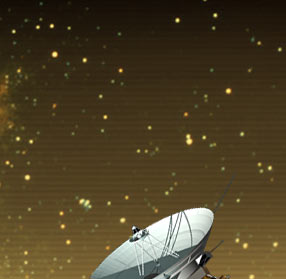 |
—— The Cassini-Huygens Mission is an international collaboration between the European Space Agency, the Italian Space Agency, and NASA. What were the difficulties and benefits of the collaboration?
|
Cassini-Huygens is the result of a major international collaboration. As always, in hindsight everything is glorious and functions perfectly well. But before we reached this result, it took a lot of effort.
Not because we had a bad relationship with NASA or with the Italian Space Agency — absolutely the contrary. At the working level, we have always worked in an atmosphere of friendship and extreme collaboration.
Cassini-Huygens is a major success not only from a scientific point of view, but also from the standpoint of international collaboration between major space players. However, putting in place a major international collaboration is not an easy task. Different planning procedures, different budgeting cycles, different approval procedures always complicate matters.
When the scientific community proposed Cassini-Huygens to NASA and ESA, the relations between the two space agencies were still suffering from the effects of the Ulysses saga. The promised NASA contribution to this mission had not materialized, creating the impression in Europe that NASA was not a reliable partner.
I had to come a long way to convince my colleagues and the ESA's advisory structure that a collaboration with NASA was not only possible, but also necessary. On the two sides of the Atlantic we worked very intensely to prepare, and approved a Memorandum of Understanding in record time.
The problems arose when the U.S. Congress, in agreement with the NASA Administrator of that time, was discussing canceling Cassini. This would have been a major setback not only to Europe but to the world of science. The ESA's member states focused their diplomatic effort on the White House, threatening a serious deterioration of the U.S.-Europe relationship if the mission was cancelled.
Eventually the European diplomatic efforts were successful. U.S. funding was secured, construction of the mission proceeded smoothly, and...today we are enjoying this great success!
Having seen the results of this mission now, everybody understands that it would have been a terrible mistake to cancel it. But at that time you can imagine how nervous everybody was, and how much effort the 15 ministries of foreign affairs in Europe invested in rescuing this mission. I think it's a great success that we have Cassini-Huygens today.
|
—— How did the Italian Space Agency (ASI — Agenzia Spaziale Italiana) become one of the participants in this project?
|
It took almost 20 years from the formulation of the first idea to the completion of the mission. During this time there were moments when we realized that neither NASA nor ESA had the capability, financial or technological, to provide one part of the satellite.
And it was exactly for this reason that we went looking for an organization or a company capable of building a very sophisticated antenna system, which could be used at the same time as a communication device and as active radar. We found out that a company in Italy, called Alenia Spazio, was extremely competent in this field. This company is still today a technological leader in the field of microwaves.
That triggered the involvement of Italy, through the Italian Space Agency, in the construction of such a complex system.
|
—— What kind of missions or projects are you interested in getting involved in now?
|
We believe that collaboration with Japan is fundamental. After the historical collaboration with NASA, some years ago we decided to turn east, because we saw there were a lot of competence and a lot of interest in working with Europe. This is why, particularly within the Science Programme, we started the exchange of scientists, of data, and also of ground stations. That was a kind of a dry run for bigger collaborations we were trying to create.
Nowadays, a major collaboration is well established on a mission that will be launched to Mercury, the inner planet of the solar system, in 2012. This mission, called BepiColombo, consists of two satellites, one of which will be provided by JAXA.
So in conclusion, we are extremely happy of our collaboration with Japan. We found in the Japanese space organization, JAXA, a lot of competence, a lot of friendship, and we are extremely keen also to extend our collaboration to other missions in the future.
|
 |
 |
| The European Space Agency is providing the Mercury Planetary Orbiter (MPO), a three-axis stabilized spacecraft. |
|
 |
 |
| JAXA is providing the Mercury Magnetospheric Orbiter (MMO), a spinner satellite dedicated to the exploration of the magnetosphere and plasmasphere of Mercury, and to the understanding of the interaction of the solar wind with the hottest planet of the solar system. |
|

—— Japan's asteroid probe, Hayabusa, is scheduled to reach the asteroid Itokawa this summer. Do you have any advice for Japan?
|
 |
| JAXA's asteroid probe, Hayabusa, is due to land on the asteroid Itokawa this summer, to collect samples. |
|
 |
You know I don't think that Japan or JAXA or the science department of JAXA, ISAS, who is in charge of the Hayabusa mission, needs any kind of recommendations. They have a very high degree of expertise, and they have already been carrying out very important and very ambitious missions.
So all I can say is to express my best wishes for a great success in this mission, and for further collection of very important data about the small bodies of the Solar System. This is considered extremely important at the European Space Agency, and as soon as we collect the data from our own Rosetta Mission, I'm sure that the Japanese scientists and European scientists will exchange data and extend their collaboration.
|

 |
 |

